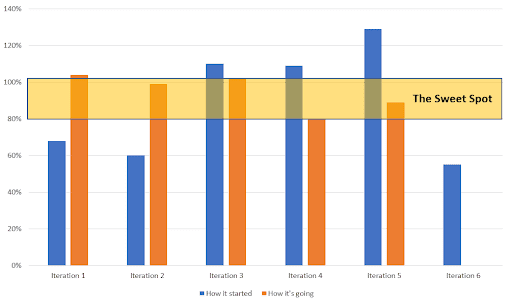
I had managed marketing teams before, but being a product owner (PO) of an Agile marketing team was a completely new concept. As a team member, I was fortunate to spend a year watching POs do the job, which gave me a leg up. But I never really appreciated the intricacy of the position until I became one. Looking back at a year in the role, here are three key lessons I’ve taken from this experience.
The Scrum Master Is a PO’s Best Friend
Stop trying to do it all by yourself. You can’t, and you don’t have to. The scrum master is your co-leader. They don’t just run retros; they’re your sounding board and partner.
Consider this: scrum masters spend their entire day thinking about how to support the team. Not the customer, not the executives—the team. So, listen to them. When they give you constructive criticism, listen. If they give you advice, listen. Scrum masters are often the ones at the back of the room watching everyone’s body language and unspoken communication while you’re busy thinking about the stories and features. They can catch things you don’t, so listen to them.
Planning Is Hard but Don’t Give Up
A year ago, you would find me crying after each iteration planning. Somehow we would start with 270 percent of capacity and be lucky if we got down to 170 percent—almost twice as much work planned than we could ever physically complete. If our planned capacity was ridiculous, our predictability was nonexistent. One iteration, we’d complete 120 percent, the next 50 percent—who knew what you were going to get from us.
But we stuck with it.
We invested in iteration planning and backlog refinement. We went back to basics, agreeing on the definition of a “1” so we could do relative sizing. We started planning poker, where everyone on the team had a say in how to size stories, even if they personally were not doing the work. And we started getting more serious and explicit about what we could and couldn’t accomplish inside two weeks.
A year later, I beam with pride. We’re a predictable and high-performing team. When we tell another team we can deliver something within an iteration; it’s the truth. Not a gut check, and employees don’t have to work insane hours to make it happen.
Pro Tip: If you’re struggling with iteration planning, I strongly recommend downloading the Iteration Planning Facilitator Checklist on the SAFe Community Platform. There’s also a good instructional video on the Team Events page.

PI Planning Is Not A Drill
I usually start thinking about PI Planning in iteration four. I don’t have features, I don’t know what the pivots will be, but I’m already thinking about what conversations I have to have to get my team ready. I’ve already got my finger in the air to sense the direction of the proverbial wind. My scrum master and I spend a lot of time thinking about preparing the team for PI Planning, creating space for exploration, and making sure we discuss every possible dependency, so there aren’t surprises later.
Virtual PI Planning offers another level of complexity. It’s absolutely critical that I have everything organized for my team and me, documented, and ready to go before we log in. The team knows where to find information, what the marketing objectives are, and what teams we need to sync with to plan our work.
Are you a PO? What lessons have you learned? What do you wish you knew when you started? Join the conversation in the SAFe Product Owners/Managers Forum on the SAFe Community Platform.
About Hannah Bink

Hannah Bink heads the Marketing Success team at Scaled Agile. She has nearly 15 years of B2B marketing experience and studied business at Pennsylvania State University. Prior to Scaled Agile, Hannah spent the majority of her career in telecommunications and healthcare sectors, running global marketing divisions. She is also author of the “Musings of a Marketeer” blog, and lives in Denver, Colorado.
Share:
Back to: All Blog Posts
Next: How Vendors Can Apply Customer Centricity When Organizing Around Value